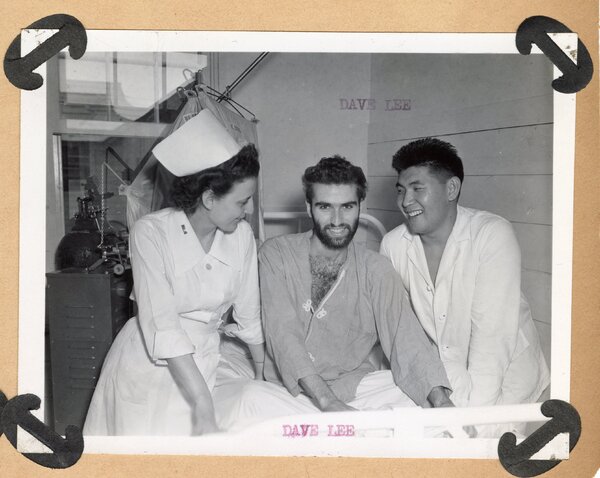France
Upon arrival in France, the 108th first went to Tourlaville and then to LeMans. At Tourlaville, nurses assisted at the 298th General Hospital. At LeMans the 108th was responsible for a 1,000 bed tent hospital. While stationed there, many 108th nurses, including Loyola graduate Cecelia Fennessy, volunteered to care for German prisoners of war who had been left at a small French hospital. This work exposed the nurses to diseases that they had never seen, such as Tetanus. After a month of living and working in tents at Tourlaville and Le Mans, the 108th became the first General Hospital to enter Paris, with an advance unit arriving on 2 September 1944 and followed by the rest on 4 September 1944. Thanks to the efforts of their commanding officer Lt. Colonel Louis Rousselot, whom Fahlstrom described as a "...tower of strength, a master of 'clout'...", the 108th General Hospital became the tenants of the most modern hospital in Paris, L'Hopital Beaujon. After a few days of organizing, the 108th opened for business on 2 September 1944 with 400 beds available.
Suddenly the nurses of the 108th went from working in tent hospitals to working in a 12-story modern hospital building. Supplies were late arriving from LeMans and many of the detached medical teams had not yet returned. Because the 108th was one of the first hospital units to arrive in France, there were few evacuation hospitals caring for patients before they were transferred. This resulted in the 108th receiving numerous wounded men, with little or no previous treatment, within days of battles. Nurses rapidly acquired experience in the art of triage, enabling the hospital staff to treat ever greater numbers of wounded. Fennessy remembered that "...when those convoys came, they just came in droves. And when they were to go to surgery, you just went up and down those wards telling your corpsman, this guy is to go to OR next, and after him that guy is to go...I think I developed a particular talent. I could tell who was going to make it, and who wasn't."
Captain Abrams and her nurses quickly learned the difference between working in a tent hospital with detached wards and a small number of patients versus working in a modern 12-story hospital building with thousands more patients than they had previously cared for. Efficiently caring for the ever increasing number of wounded being received required not only a new strategy for the nurses of the 108th, but also ways to integrate the temporary duty and detached service nurses from other units. Abrams instituted a system of having a supervisor on each floor, which could hold anywhere from 55 to 220 patients. Each day supervisors gave daily reports about their floor to their relief at 6PM, followed by a report to the Chief Nurse. There were weekly meetings for supervisors and occasionally general meetings for all nurses. Shifts for nurses were supposed to be from 7:00AM to 7:00PM with three hours off; however, the average shift often ran until 9:00 or 10:00PM.
Nursing supervisors for the 108th at the Beaujon Hospital included:
- Chief Nurse - Major Sara M. Abrams
- Assistant Chief Nurse - Capt. Helen A. Dooley
- Operating Room Supervisor - 1st Lt. Margaret I. Donovan
- Central Supply Supervisor - 1st Lt. Frances R. Mikulec
- Supervisor Clinic Annex - 2nd Lt. Rosemary A. Kelly
- Supervisor N.P. Section - 1st Lt. Tillie Kuzma
- Supervisor Officers' Ward - 1st Lt. Victoria M. Fisher
- Supervisor First Floor - 1st Lt. Ruth Ritenhouse
- Supervisor Second Floor - 1st Lt. Helen E. Natzke
- Supervisor Third Floor - 1st Lt. Marie R. Zimmerer
- Supervisor Fourth Floor - 1st Lt. Edith M. Clark
- Supervisor Fifth Floor - 2nd Lt. Esther M. Schneider
- Supervisor Sixth Floor - 1st Lt. Phyllis Ryan
- Supervisor Seventh Floor - 1st Lt. Catherine R. Evans
- Supervisor Eighth Floor - 1st Lt. Lucille C. Pietrawicz
- Supervisor Ninth Floor - 1st Lt. Esther A. Cedarstaff
- Supervisor Tenth Floor - 1st Lt. Mary R. O'Keefe
- Supervisor Eleventh Floor - 1st Lt. Emily M. Marcouiller
By 14 September 1945, when the 108th was relieved by the 179th General Hospital, the nurses of the 108th had cared for over 68,000 patients at the Beaujon Hospital.



